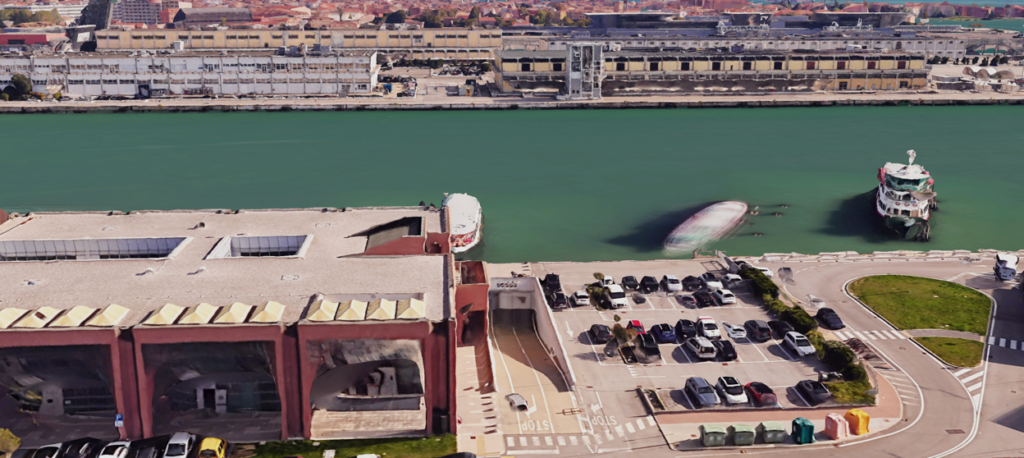Merit Zimmermann
PhD candidate in Digital Heritage at Erasmus University Rotterdam and Sustainable Healthy Cities: Building for the Future Summer School student
Email: [email protected]
This proposal emerged from the summer school Sustainable, Healthy Cities: Building for the Future (Venice, June 2024) which was organized by GCHU, The King’s Foundation, and the European Cultural Academy. The key idea is to create a development plan for Tronchetto in Venice that prioritises the needs and interests of local residents, improving the quality of life for diverse user groups. Based on the input of around 40 Venetians, I suggest that Tronchetto is well-suited for a mixed-use development where living, working, and learning flow together with social and cultural life. My proposal, oriented towards the common good, represents a community-led approach to sustainable and healthy urbanism that is of relevance to an ever-growing set of people and contexts.
Developing Venice’s artificial stop-over island Tronchetto is a challenging exercise, especially when attempting to balance the interests of private actors, civil society, and governments. A patchwork of participation, Tronchetto sees some groups highly involved, such as real estate developers and investment firms, whereas others show minimal or no participation because they lack the influence and opportunities to engage. This proposal suggests a redevelopment of Trochetto that is centered on the needs and wishes of the local population, bringing about positive change in their lives. Residents should have a voice and agency in the transformation of Tronchetto because they face significant vulnerabilities, from risks associated with climate change and overtourism to displacement due to high rents and housing shortages.
The starting point for my proposal was a local needs assessment. Besides visiting Tronchetto and examining the current situation on-site, I conducted informal, conversational interviews with 10 Venetians, from shop owners and street vendors to musicians and craftsmen (Figures 1 – 3). I asked them about how they experience living in Venice, what challenges they face, and their hopes for the future. I also reviewed 33 interviews from the Riscrivere il Futuro project to deepen my understanding of Venetians’ ideas and preferences regarding the direction in which their city is moving. During my thematic analysis, three aspects of local priority emerged: everyday life, cultural economy, and the relationship between humans – particularly tourists – and the environment.

Figure 1: A word cloud of Venetians’ thoughts on everyday life (Source: Author)

Figure 2: A word cloud of Venetians’ thoughts on the cultural economy (Source: Author)

Figure 3: A word cloud of Venetians’ thoughts on people and the environment (Source: Author)
To enhance everyday life in Venice, I suggest using vacant, underutilised places in Tronchetto as social and student housing, supporting affordable living and community integration.

Figure 4: Development draft for Tronchetto (Source: Author)

Figure 5: Development draft for Tronchetto (Source: Author)
I also want to increase street-level activity by turning dead spaces like half-empty parking lots into green and social areas, including playgrounds, skate parks, and nightclubs for leisure and entertainment. These spaces will feature basic amenities such as benches, tables, restrooms, water fountains, walking and cycling paths, and streetlights for safety and well-being.


Figures 6 and 7: Before and after collage (Source: Author)
To diversify Venice’s tourism monoculture economic structure, I propose turning other parts of the underexploited building stock in Tronchetto into dynamic hubs for cultural production and dissemination (Figures 4-9). These hubs will include studio, co-working, and maker spaces, as well as research and training centers where traditional skills and modern innovation intersect. As a point of attraction for craftsmen and creatives, Tronchetto can establish a more accessible and enriching cultural scene, potentially promoting economic and social vitality.


Figures 8 and 9: Before and after collage (Source: Author)
Finally, I propose using the nature of Tronchetto as a transit zone to educate tourists on what a respectful, reciprocal relationship between humans and the environment might entail. On their way from the car park to the ACTV docks, tourists will pass an educational centre where they can learn about Enjoy Respect Venezia, and easy ways to minimise pollution. The centre will feature informational exhibits and interactive displays focused on promoting awareness of the vulnerability of Venice’s built and natural heritage. This gives Tronchetto another main purpose, namely, encouraging environmental stewardship and conservation.
